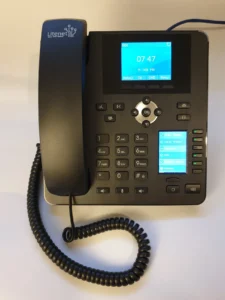by Chris Thomas, Director
The last few weeks, and the ones coming, will have seen a lot of people in a position they probably haven’t been in before. Those people that have been working from home when they wouldn’t normally, those that have been furloughed indefinitely. When the restrictions are lifted and the normal office work is expected to resume, what frame of mind are your staff going to be in?
A large proportion of these people have had a hard time recently. Their whole routine has been changed dramatically, and justifiably so. Social distancing and lockdown, as we all know, is key to ridding ourselves of this pandemic. Those who have found themselves at home, directionless, bored, perhaps with families to look after, will have taken a while to get used to this. Particularly if they are used to being productive. Getting back to normal, or whatever passes as normal from this point, is also going to take some getting used to.
Contact and Communication

One way to alleviate any concerns, and keep the spirits up, is to keep those lines of communication open.
Regular contact from leadership teams will give people a sense of purpose. Furloughed employees are, of course, unable to work during furlough, but if you can build enough confidence that your business is ready to come out of the other side of this situation with all guns blazing then it’s going to motivate and build some excitement.
Even if the news is bad, trusting your staff and being honest is going to drive them forwards and make them fight all the harder. Some might decide to leave, some might have to be cut. These difficult situations will have to be dealt with as they happen, but if the remainder of your staff are fired up and battling for you then it’s going to make it all the easier.
Keep the communication open and don’t let your people think they’ve been forgotten. Telephone calls, newsletters, conference or video calls. Choose what works best for you.
Ease them in

A lot of businesses will have looked into remote working technology during the lockdown. Be that VoIP solutions to allow office calls to be answered on a softphone or home based desk phone, company mobiles, or any other form of remote connectivity. That investment can be put to good use by adopting a flexible approach to the return to work process.
We’re likely to need to maintain some element of social distancing, even when the lockdown restrictions are lifted. In almost all offices space is a premium and businesses have tried to cram as many people in to that space as possible. Social distancing measures may require larger gaps between workstations, meaning less desk space available to a full complement of staff. Leaving desks unattended might help your business adhere to these distancing measures, so think about using Hotdesking and staff rotation to allow people to work from home a couple of days a week and in the office a couple of days.
This is likely to ease them back into the routine they were used to, alleviating some of the anxiety of being in a crowded room yet still make them feel part of the organisation. Give them sanitising wipes and sprays to clean down the work areas too.
Build your Disaster Recovery Plan

Constant updates, maintenance, planned outages etc, are all take care of by the provider, usually at some time in the early hours of the morning. The providers build huge amounts of resilience into their networks, far more than most businesses would do on their own premises, and customers benefit from the economies of scale. Sharing a larger infrastructure with many other businesses makes it cheaper for everyone in long run. It also negates any capital expenditure when maintenance renewals, upgrades or unforeseen hardware failures occur.
As always, Litenet are available to help. We pride ourselves on being knowledgeable without overselling. Our Advanced Partnership Program allows us to work with your business, almost as if we were employed by you, to develop your telecommunications and connectivity infrastructure. We promise fair and consistent pricing along with gold class customer service. We want to work with you.
For any questions or to get in touch please call us on 01908 794 794 or email info@litenetuk.com


